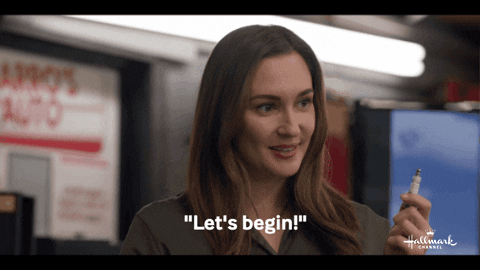- Twice the Impact PM 🔥
- Posts
- PM Interview: Prioritize tasks/features when facing tight deadlines
PM Interview: Prioritize tasks/features when facing tight deadlines
Let's tackle this common backlog prioritization interview question!

Hey Impactful PM! It’s Areesha :)
Today, we’re diving into a topic that’s near and dear to every Product Manager’s heart: prioritizing tasks and features in a product backlog, especially when the pressure is on, and deadlines are tight.
We all know that balancing stakeholder demands, business goals, and user needs can feel like a juggling act, but with the right approach, it’s totally manageable.
Let’s explore how to navigate these challenges, make smart trade-offs, and keep the focus on what really matters—delivering value and meeting those all-important deadlines!

Gif by HallmarkChannel on Giphy
Hottest from last week 🔥
Asking Clarifying Questions: Understanding the Context ✔
Interviewer:
"How do you prioritize tasks and features in your product backlog, especially when facing tight deadlines?"
Areesha:
"Thank you for the question. Before I dive into the specifics of prioritizing tasks and features, I’d like to clarify a couple of things to better understand the context of the scenario."
Areesha:
"First, could you tell me more about the nature of the product we're discussing? Is it a mature product with a well-established user base, or is it in the early stages of development?"
Interviewer:
"It's a mature product with a large and diverse user base. We're continuously adding new features and refining existing ones based on user feedback and market trends."
Areesha:
"Got it. That definitely impacts how we approach prioritization. My second question would be, are there any specific stakeholder demands or external factors influencing the urgency of these tasks and features?"
Interviewer:
"Yes, there are. We have key stakeholders pushing for certain features due to market competition, and there's also pressure from upper management to meet quarterly goals."
Areesha:
"Thank you for that context. It sounds like there’s a mix of stakeholder expectations and time-sensitive market demands. Let me walk you through how I would approach prioritization in this scenario."
1. Understanding the Big Picture 🌎
Aligning with Business Goals
Areesha:
“First, I ensure that all tasks and features in the backlog are aligned with the broader business objectives.
This includes understanding what our top priorities are—whether it’s increasing user engagement, improving customer retention, or launching a feature that will give us a competitive edge.
By doing this, I can focus on tasks that directly contribute to these goals.”
Assessing Impact vs. Effort
Areesha:
I then evaluate each task and feature based on its potential impact on the product and the effort required to implement it.
This often involves using frameworks like the Impact vs. Effort matrix or the RICE (Reach, Impact, Confidence, Effort) scoring method.
For example, if a feature has a high impact on user satisfaction but requires minimal effort, it would naturally be prioritized higher.”
2. Engaging with Stakeholders 🗣
Clear Communication
Areesha:
“Given the stakeholder pressures you mentioned, communication is key. I engage with stakeholders to understand their needs and the reasons behind their requests.
Sometimes, the urgency they perceive might be based on assumptions that need to be clarified or challenged. I make sure to align their expectations with what is realistically achievable within the given timeframe.”
Negotiation and Trade-offs
Areesha:
“When tight deadlines are involved, it's often necessary to negotiate trade-offs. I discuss with stakeholders the possibility of deferring less critical features to later releases, especially if those features don't align strongly with our immediate goals.
For example, if a stakeholder insists on a new feature, I might ask, ‘Can we break this feature down into smaller deliverables?’ This way, we can start delivering value incrementally while managing the deadline pressure."
3. Prioritization Frameworks 🧠
MoSCoW Method

Areesha:
“One of the frameworks I often use is the MoSCoW method, which categorizes tasks into Must-haves, Should-haves, Could-haves, and Won’t-haves.
This helps in clearly defining what is absolutely necessary for the upcoming release and what can be pushed to future iterations.
For instance, a Must-have could be a critical bug fix that impacts a significant portion of users, while a Could-have might be a minor UI enhancement.”
Weighted Scoring
Areesha:
“Another effective approach is weighted scoring, where each task is assigned a score based on factors like user value, revenue potential, and strategic alignment.
These scores help in objectively comparing tasks and features, ensuring that the most valuable ones are prioritized even under tight deadlines.
For example, if two features are being considered and one scores significantly higher in terms of strategic alignment, it will take precedence.”
4. Iterative Review and Adjustment 🧐
Regular Backlog Refinement
Areesha:
“I believe in regularly revisiting and refining the backlog, especially as new information comes in or as deadlines approach.
This iterative approach allows for adjustments based on changes in market conditions, user feedback, or internal priorities.
For example, if a competitor releases a new feature that we hadn’t anticipated, we might need to reprioritize our backlog to respond quickly.”
Monitoring Progress
Areesha:
“Once the tasks and features are prioritized, I closely monitor progress through daily stand-ups and weekly reviews.
This helps in identifying any blockers early on and making necessary adjustments to the plan.
If a particular task is taking longer than expected, I assess whether it’s worth continuing or if resources should be redirected to something more critical.”
5. Balancing Quality and Speed
Maintaining Product Quality
Areesha:
“While tight deadlines might tempt us to cut corners, I emphasize the importance of maintaining product quality.
This might involve making tough decisions, such as scaling back the scope of a feature to ensure it meets our quality standards.
For instance, if a feature is crucial but development is running behind, I might opt to release a simpler version first, with plans to enhance it in subsequent iterations.”
Incremental Delivery
Areesha:
“I also advocate for delivering work incrementally, especially when facing time constraints.
By breaking down larger features into smaller, manageable parts, we can deliver value to users more quickly and gather feedback to guide future iterations.
This approach not only meets deadlines but also helps in mitigating risks associated with big-bang releases.”
🤣 Product Management Meme of the Day 🤣

That’s all for today !
Stay tuned for some freshly baked PM tips, strategies, insights, weekly Q/A digests, and more right into your inbox!🚀
Cya!
Areesha ❤️
Connect with us on LinkedIn:

Gif by onatuchi on Giphy
Reply